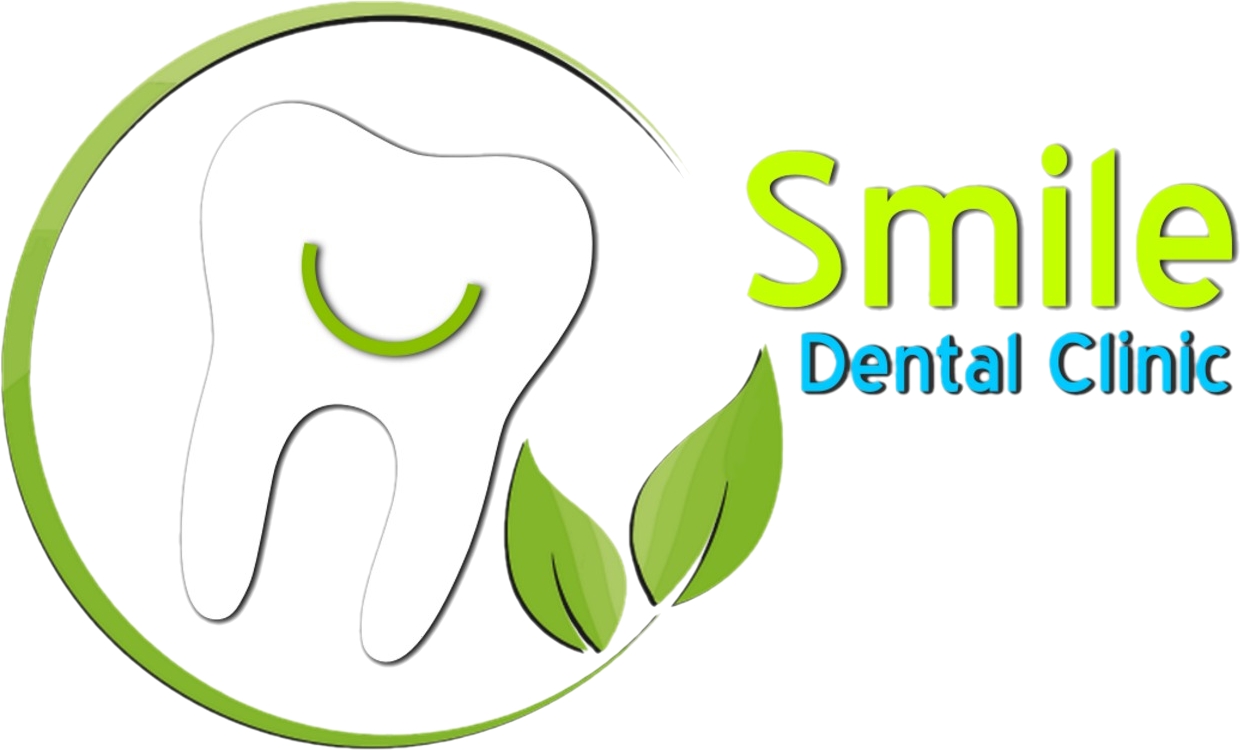DENTAL TREATMENT
We accept PPO insurances,
our staff will kindly help you fill out the necessary forms for your dental claim.
Dental Treatment and Dental Implants
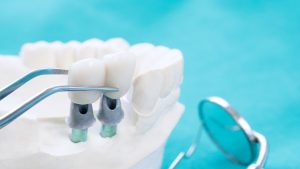 Dental Treatment, Dental implants are small titanium fixtures which are placed in the jaw bone. After bonding, they serve as a new root for replacement teeth. Dental implants can be used to replace a single lost tooth or many missing teeth.
Dental Treatment, Dental implants are small titanium fixtures which are placed in the jaw bone. After bonding, they serve as a new root for replacement teeth. Dental implants can be used to replace a single lost tooth or many missing teeth.
Since titanium is biocompatible with living tissues, your body accepts it naturally. Dental implants are the best and most permanent way to replace missing teeth.
Who is a candidate for Dental Treatments?
Dental Implants are appropiate for almost anyone who is missing teeth or at risk of losing teeth because of cavities, gum disease, accidents, etc.
- Individuals with loose or poor fitting dentures due to flat ridges.
- Individuals with multiple missing teeth who need support for permanent teeth and dental treatments.
In such patients, normal eating and speaking habits are affected and in many dental treatments cases individuals are completely unable to wear dentures. This loss of function is the primary reason dental implants are recommended. Along with improving an individual’s ability to chew and enjoy food, dental implants can make the patient feel more secure as speech and appearance are often improved as well.
During the first appointment and dental treatment, specialized diagnostic studies are performed to determine the ideal treatment for each person.
After careful evaluation of your health history, Dr. Navarrete will alert you to any conditions that may affect your dental treatment. Remember, age is not a factor
First Surgical Phase (Implant Placement)
 Under Local anesthetic Dr. Alvarez places dental implants into the jaw bone with a very precise surgical procedure. The implant remains covered by gum tissue while fusing with the jaw bone.
Under Local anesthetic Dr. Alvarez places dental implants into the jaw bone with a very precise surgical procedure. The implant remains covered by gum tissue while fusing with the jaw bone.
Second Surgical Phase (Implant Uncovery)
 After approximately six months of healing. Under local anesthetic, the implant root is exposed and a healing post is placed over the top, so that the gum tissue heals around the post.
After approximately six months of healing. Under local anesthetic, the implant root is exposed and a healing post is placed over the top, so that the gum tissue heals around the post.
Prosthetic Phase (Teeth)
 Once the gums have healed, an implant crown is fabricated and screwed down to the implant.
Once the gums have healed, an implant crown is fabricated and screwed down to the implant.
Crowns and Caps
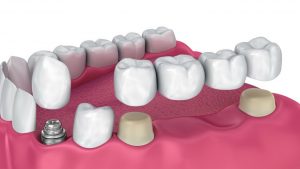 A crown or cap is a cover that fits over a tooth that has been damaged by decay, broken, badly stained or mis-shaped. It is prepared by your dentist, and usually requires more than one visit to complete.
A crown or cap is a cover that fits over a tooth that has been damaged by decay, broken, badly stained or mis-shaped. It is prepared by your dentist, and usually requires more than one visit to complete.
A crown can be made of acrylic, metal, porcelain, or porcelain bonded to metal. All-porcelain crowns look more like your natural teeth, and therefore are usually used for front teeth, while porcelain bonded to metal is stronger and better for crowns in the back of the mouth. Sometimes all-metal crowns are used for back teeth because of the metal’s strength.
To prepare your tooth for a crown, the tooth is first frozen with anesthesia, and then filed down so the cap can fit over it. An impression of the teeth and gums is made, and a temporary cap is fitted over the tooth until the permanent crown is ready.
Fixed Bridge
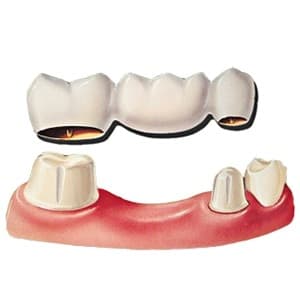 A fixed bridge replaces one or more missing teeth. It is called a “bridge” because it covers a gap, and the bridge is supported by teeth or implants on one or both sides of that gap. The supporting teeth or implants are sometimes called abutments. In this procedure, each abutment is prepared to receive full crowns or caps. When completed, the bridge is cemented into position over the supporting abutments
A fixed bridge replaces one or more missing teeth. It is called a “bridge” because it covers a gap, and the bridge is supported by teeth or implants on one or both sides of that gap. The supporting teeth or implants are sometimes called abutments. In this procedure, each abutment is prepared to receive full crowns or caps. When completed, the bridge is cemented into position over the supporting abutments
Removable Denture
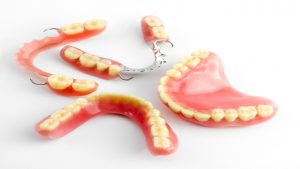 What Dental Treatment is the rigth one for you?
What Dental Treatment is the rigth one for you?
A removable denture is a single appliance that replaces several lost teeth. The denture is held in place by clasping some of the remaining teeth — or by suction where none of the natural teeth are left
What are composite fillings?
Mouth fillings are the most popular method of restoring teeth. There are many types of materials that can be used for fillings such as amalgam and gold. Composites fillings are a popular choice because they match the color of teeth and look natural. Composites are not only used to restore decayed teeth, but they may also be used for crack or broken teeth, stained teeth, and teeth that have been worn down.
How are fillings placed?
Fillings are very common and can be done in one visit to the dentist. Once anesthesia is applied, the dentist will begin removing decay from the tooth using a dental drill and clean out the decay area. When all the decay is removed, the dentist will prepare and shape the area so that the filling material, such as composite, can be placed. Once the filling has been placed, the filling will be shaped and the tooth will be polished so it can look as natural as possible.
After first receiving a filling, many patients become temporarily sensitive to hot and cold foods. When the tooth becomes used to having the filling, the sensitivity will subside.
Tooth Whitening is a popular procedure done to brighten your smile. First, speak with your dentist to see if whitening is a good option for you. Depending on the type of discoloration that is present on your teeth, whitening may or may not be effective. Common reasons for teeth discoloration result from using tobacco, staining from food or drinks and poor oral hygiene. Tooth whitening is most effective on surface stains. Although whitening is helpful for the appearance of teeth, it is not permanent and stains may recur over time.
There are many types of whitening that can be done and the most common type is a gel-solution that can be applied directly to the surface of the teeth. This type of whitening can be done at a dental office or at home. At a dental office, the dentist will put a whitening agent on the teeth that is activated by a light or laser. For whitening at home, the dentist may recommend that you wear a whitening tray containing the whitening agent for several hours a day till you reach the shade you desire. Whitening toothpaste may also be purchased to help remove staining on the enamel.
Contact your dentist to see if tooth whitening is right for you.
Root Canal
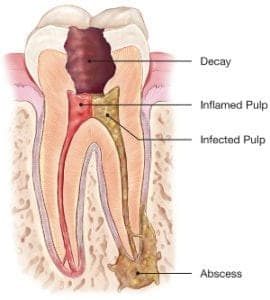 Root canal therapy is a dental treatment used to save a tooth when the tissue, blood vessels and nerves inside of a tooth have become inflamed. In order to save the tooth and remove the pain, the dentist will need to remove infected and diseased tissue to help clean out the infected area. The canal inside is then medicated to allow the surrounding area to heal.
Root canal therapy is a dental treatment used to save a tooth when the tissue, blood vessels and nerves inside of a tooth have become inflamed. In order to save the tooth and remove the pain, the dentist will need to remove infected and diseased tissue to help clean out the infected area. The canal inside is then medicated to allow the surrounding area to heal.
Reasons a root canal may be performed
- Deep decay
- Infections at the tip of the root or inside the tooth canal
- Cracked, broken or injured teeth
Generally, but not always, a crown will need to be placed after the root canal treatment is complete in order to protect the tooth from any further damage. Sensitivity after the procedure is generally experienced by many patients and subside when the tooth has healed. When your treatment has been completed, your dentist will provide you with special instructions on how to care for your newly treated tooth.
Wisdom Teeth
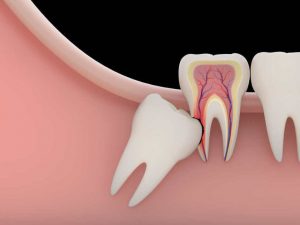 Wisdom teeth are the third and final set of molars that most people get in their late teens or early twenties. Sometimes these teeth can be a valuable asset to the mouth when healthy and properly aligned, but more often, they are misaligned and require removal.
Wisdom teeth are the third and final set of molars that most people get in their late teens or early twenties. Sometimes these teeth can be a valuable asset to the mouth when healthy and properly aligned, but more often, they are misaligned and require removal.
When wisdom teeth are misaligned, they may position themselves horizontally, be angled toward or away from the second molars, or be angled inward or outward. Poor alignment of wisdom teeth can crowd or damage adjacent teeth, the jawbone, or nerves.
Anatomy of the Teeth
The teeth are the hardest substances in the human body. Besides being essential for chewing, the teeth play an important role in speech. Parts of the teeth include:
- Enamel: The hardest, white outer part of the tooth. Enamel is mostly made of calcium phosphate, a rock-hard mineral.
- Dentin: A layer underlying the enamel. Dentin is made of living cells, which secrete a hard mineral substance.
- Pulp: The softer, living inner structure of teeth. Blood vessels and nerves run through the pulp of the teeth.
Wisdom teeth also can be impacted — they are enclosed within the soft tissue and/or the jawbone or only partially break through or erupt through the gum. Partial eruption of the wisdom teeth allows an opening for bacteria to enter around the tooth and cause an infection, which results in pain, swelling, jaw stiffness, and general illness. Partially erupted teeth are also more prone to tooth decay and gum disease because their hard-to-reach location and awkward positioning makes brushing and flossing difficult.
How Do I Know if I Have Wisdom Teeth?
Ask your dentist about the positioning of your wisdom teeth. He or she may take an X-ray periodically to evaluate for the presence and alignment of your wisdom teeth. Your dentist may also decide to send you to an oral surgeon for further evaluation.
Your dentist or oral surgeon may recommend that your wisdom teeth be extracted even before problems develop. This is done to avoid a more painful or more complicated extraction that might have to be done a few years later. Removal is easier in young people, when the wisdom teeth roots are not yet fully developed and the bone is less dense. In older people, recovery and healing time tend to be longer.
How Are Wisdom Teeth Removed?
The relative ease at which your dentist or oral surgeon can extract your wisdom teeth depends on their position and stage of development. Your oral health care provider will be able to give you an idea of what to expect during your pre-extraction exam. A wisdom tooth that is fully erupted through the gum can be extracted as easily as any other tooth. However, a wisdom tooth that is underneath the gums and embedded in the jawbone will require an incision into the gums and then removal of the portion of bone that lies over the tooth. Often, for a tooth in this situation, the tooth will be extracted in small sections rather than removed in one piece to minimize the amount of bone that needs to be removed to get the tooth out.
What Happens During Wisdom Teeth Removal?
Before your wisdom teeth are pulled, the teeth and the surrounding tissue will be numbed with a local anesthetic — the same type used to numb a tooth prior to having a cavity filled. In addition to the local anesthetic to numb the pain, you and your dentist or oral surgeon may decide that a sedative is desired to control any anxiety. Sedating medications that could be selected include: nitrous oxide (otherwise known as “laughing gas”), an oral sedative (for example, Valium), or an intravenous sedative (administered via an injection into your veins). If nitrous oxide is given, you will be able to drive yourself home. If any of the other medications is selected, you will need someone to drive you both to and from the appointment.
Gum Surgery
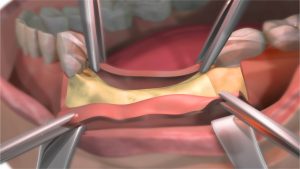 Periodontal or gum disease is an infection that affects the gums and jaw bone, which can lead to a loss of gum and teeth. There are two major stages — gingivitis and periodontitis. Gingivitis is the milder and reversible form; periodontal disease is often more severe. In some cases, gum surgery will be required to reverse the effect of the disease.
Periodontal or gum disease is an infection that affects the gums and jaw bone, which can lead to a loss of gum and teeth. There are two major stages — gingivitis and periodontitis. Gingivitis is the milder and reversible form; periodontal disease is often more severe. In some cases, gum surgery will be required to reverse the effect of the disease.
Veneers
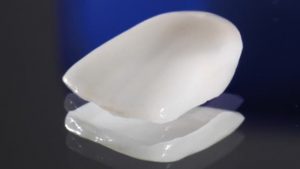 Veneers are strong, thin pieces of porcelain that are bonded to the teeth. They are used to repair chipped, decayed or stained teeth and may help in closing gaps between teeth. With a bit of contouring, veneers may also correct slightly crowded or overlapping teeth. If your teeth have discolored with age, a veneer may improve their appearance.
Veneers are strong, thin pieces of porcelain that are bonded to the teeth. They are used to repair chipped, decayed or stained teeth and may help in closing gaps between teeth. With a bit of contouring, veneers may also correct slightly crowded or overlapping teeth. If your teeth have discolored with age, a veneer may improve their appearance.
Veneers can also be used for cosmetic reasons instead of crowns, which are more often used for badly damaged or decayed teeth. The tooth enamel needs to be ground down slightly in order to accommodate the veneer.
Veneer preparations frequently require the use of local anesthetic and, depending on color and shade, may take more than one appointment to complete.
Dentures
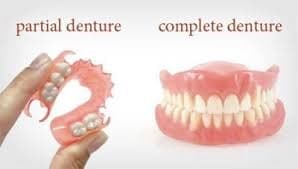 Many people assume they will wear dentures eventually. However, with proper care, your teeth can easily last a lifetime. That said, should you lose the majority of your teeth, dentures can replace them and restore your smile wit a dental treatment.
Many people assume they will wear dentures eventually. However, with proper care, your teeth can easily last a lifetime. That said, should you lose the majority of your teeth, dentures can replace them and restore your smile wit a dental treatment.
And even if you are only missing a few of your natural teeth, you may want to think about filling out your smile with dentures. They can help you look younger while providing support to your cheeks and lips. Dentures aid in speaking, chewing and swallowing. Visit your dentist to find out if dentures are right for you.
Types of Dentures
There are two types of dentures: full and partial. Each type is made from an impression of the wearer’s mouth. Once the mold is made and the measurements are sent off to a dental lab to be made into permanent dentures, the dentist fits a temporary denture.
Dentures are secured by attaching to or fitting over any remaining natural teeth or implants.
Denture Care
Taking care of your dentures is vital to your overall oral health. Here are some tips on how to keep them in good condition:
- Clean dentures over a water-filled sink to prevent damage if they are dropped
- Place a small amount of liquid hand soap on the denture brush and brush all surfaces, including the clasps on a partial denture
- Rinse well with water
- Store dry in a labelled denture cup
- To re-insert dentures, wet first with water to prevent discomfort
Who does this procedure?
Your dentist may do dental treatment with a basic orthodontic treatment or refer you to an orthodontist. An orthodontist is a dentist who has completed a university post-graduate specialty program in orthodontics. Orthodontics is a specialty of dentistry that deals with preventing and correcting malocclusions.
Who can get orthodontic treatment?
Orthodontic dental treatment isn’t just for teens, as teeth can be moved at any age. In fact, more and more adults are having orthodontic treatment to improve the look and health of their smile. Your dentist or orthodontist can evaluate if orthodontic dental treatment is right for you.
In some cases it is helpful to start orthodontic dental treatment before all the permanent (adult) teeth come in. This is called interceptive orthodontics. Your dentist or orthodontist can do an orthodontic screening to find out if your child will need orthodontic dental treatment to correct a bad bite. Interceptive orthodontics allows your dentist or orthodontist to treat or stop a problem as it is developing.
How long does treatment take?
Orthodontic dental treatment takes time. The amount of time depends on your age, the seriousness of your problem and the dental treatment technique used. Treatment generally involves a visit to your dentist or orthodontist on a regular basis over a period of months to years. In general, it takes longer to treat adults than children or teenagers. Most people wear braces for about 2 years.
Orthodontic dental treatments
Depending on the extent of your bad bite, your dentist or orthodontist may suggest one or a combination of the following orthodontic dental treatments to correct your bite:
- Braces.
- Headgear.
- Removable appliances.
- Retainers.
- Oral surgery.
Braces
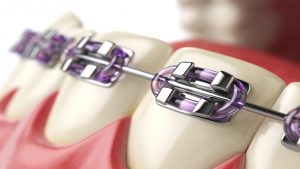 The most common type of orthodontic treatment used by dentists or orthodontists is braces.
The most common type of orthodontic treatment used by dentists or orthodontists is braces.
How braces are done
To apply braces, your dentist or orthodontist attaches brackets (or bands) to each tooth with glue. Arch wires are fitted into all the brackets and are usually held in place with rubber or wire ties.
You may feel some discomfort for a while when your braces are first put on and when they are adjusted. It will take a little time to get used to your braces and they can bother your lips and cheeks. If this happens, a relief wax can be applied to your braces. To make eating easier after an adjustment, soft foods are recommended.
Caring for your teeth with braces
Proper brushing and flossing is even more important for people with braces because plaque can easily build up around the edges of your braces. If this plaque is not properly removed, white or brown marks may appear on the enamel surface of your teeth and these marks may be permanent.
Brushing and flossing with braces take longer. It is important to brush your braces as well as the front, back and chewing surfaces of the teeth. Your dentist or orthodontist will give you tips on how to brush and on how to floss using floss threaders. After flossing, roll it up in a tiny ball and put it in the garbage. Never flush floss down the toilet. Parents should supervise their children to make sure they do a good job cleaning their teeth and braces and follow the advice of their dentist or orthodontist.
Caring for your braces
If you have braces, do not bite on hard things such as ice cubes and nuts. Do not chew the ends of pens or pencils. Also avoid sticky treats like chewing gum or toffee because they can loosen braces, distort wires and even pull braces off your teeth. If any of these problems happen, you will need to have your braces repaired by your dentist or orthodontist.
If the elastics or ties come off the bracket, you may be able to put them back around the bracket using small tweezers. If a wire is sticking out and bothering your lip or cheek, you may be able to push it back into place with the rubber eraser end of a pencil or it may be carefully cut off with a nail clipper. When a problem happens, always contact your dentist or orthodontist to have your braces checked as soon as possible. Problems that are not fixed can cause the treatment to last longer.
Choices in braces
Today’s braces are smaller and less noticeable. Besides the traditional metal braces, there are tooth-colored ceramic braces that are less noticeable. Clear aligners are also available for adults. Braces and elastics can also be multicolored. Speak to your dentist or orthodontist about all your choices in dental treatments.
Headgear
This treatment uses an appliance that fits around the head or neck. It guides the direction of tooth movement and jaw growth in someone who is still growing. There are different types of headgear and they may be worn during any part of the orthodontic treatment. Your orthodontist or dentist will show you how to put on the headgear and tell you how long to wear it each day. In most cases it is worn during the evening and at night.
Removable appliances
Although removable appliances are not as precise as braces, they can move a tooth or a group of teeth. They are fitted by your dentist or orthodontist. Removable appliances can be worn before braces are applied, while braces are worn, or on their own to treat specific problems.
Retainers
Once your braces have been removed, a retainer can be used to keep your teeth in the right place. Retainers are fixed (attached to the teeth) or removable. They may need to be worn all the time or part of the time.
Oral surgery
Tooth removal may be needed if your teeth are crowded or if a tooth is badly out of position. Jaw surgery (or orthognathic surgery) may be needed when there are major differences in the size or position of the upper and lower jaws. If your orthodontist thinks you will need jaw surgery, he or she will refer you to an oral and maxillofacial surgeon to get the correct dental treatment.
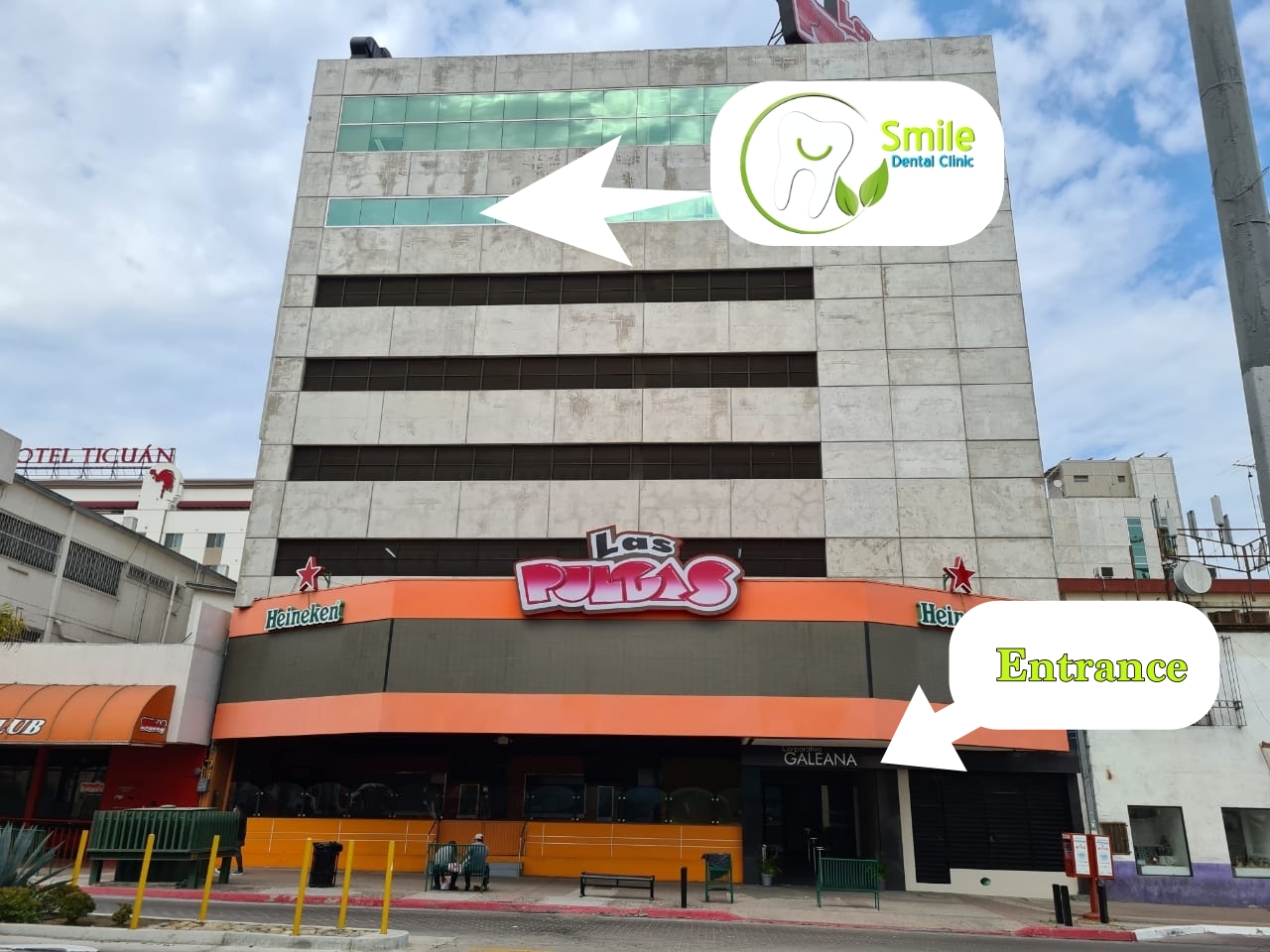
Calle Hermenegildo Galeana 8133, Zona Centro, 22000 Tijuana, (Oficina 504)
 (619) 209 8194, Mx (664) 904 1535
(619) 209 8194, Mx (664) 904 1535
 smiledentalspa2020@gmail.com
smiledentalspa2020@gmail.com
Hours Monday through Saturday from 9 am to 5 pm.
